By Jane Tanner
Sarah Nixon compulsively grew flowers in her Toronto backyard and filled her house with blooms. Then, she moved on to her neighbors’ yards. Thus was born My Luscious Backyard, her floral business, an urban flower farm created with a network of back and front yards. Today, her neighbors in Toronto’s Parkdale neighborhood are accustomed to seeing her station wagon loaded with buckets of flowers that find their way to florists, subscription clients and weddings.
Sarah’s career started in documentary filmmaking, but plants and the outdoors were an important part of her DNA. During summers in high school and college she worked on an organic farm. After university, she took a job planting trees in remote areas of northern Ontario, going in after logging companies departed. She climbed over obstacle courses of slash and branches left in logged areas while hauling bags of baby trees and dealing with horrible black flies and mosquitoes. She was paid by the tree so she had to work fast.
“It’s the most intense work I’ve ever done,” she recalls. “They stopped making prisoners do it because it was considered too harsh.”
Yet, it certainly was an apt preamble to farming. After tree planting, she became the gardener at Kew Gardens, one Toronto’s largest parks, and also teaching yoga.
While pondering her next step, Sarah found GFM founder and former editor Lynn Byczynski’s book,The Flower Farmer: An Organic Grower’s Guide to Raising and Selling Cut Flowers in a bookstore and realized small-scale organic flower farming was a realistic goal. In 2001, she started selling flowers as farmers markets popped up around Toronto, including near her house.
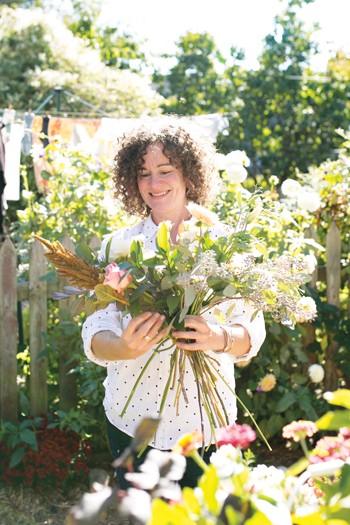
The evolution of Sarah’s tapestry-of-urban-yards flower farm — what works well and what didn’t — can be a useful guide for floral grower/designers who may want to follow suit.
She figured it out for herself as she grew the business. Meanwhile, others such as vegetable farmer Curtis Stone in British Columbia (his book: The Urban Farmer) and Amyitis Gardens, a neighborhood-yard-based farming system that supplies restaurants in San Francisco’s Mission District, were on parallel paths.
Sarah first moved beyond her own backyard when she asked a neighbor if she could grow flowers in her yard. Then, she asked a few other friends on her block.
“I realized people were open to the idea of someone coming to grow flowers,” she said. So, she upped her game and scoped out sunny, flat yards and put notes in mailboxes although she didn’t know the people who lived there. Next, she put an ad on Craigslist in the free section, which turned out to be a cautionary tale. She was inundated with responses that didn’t fit her needs, including people who only had balconies. Yet, the enthusiastic response reinforced the idea that people were interested. So, she refined her request.
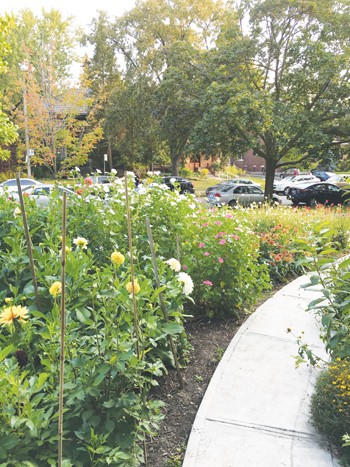
Ten years ago, she moved across Toronto to the Parkdale neighborhood in no small part because of its larger yards. She scouted yards that were the largest, flattest and sunniest within a four-minute driving radius from her house.
“When things are farther away they are more neglected,” she said. “I have had gardens that have been too far away; it’s only worth it if it’s going to be really big and really fantastic and the homeowner is a reasonable person.”
After the move, Sarah had the first of her two children, so she expanded slowly with more yards (mostly front yard gardens) up to a peak of 13. This year, she is working with 10 gardens, including her own, with an average size of 360 square feet.
It wasn’t a hard sell to get people to agree to let her use their properties, she says. “They get to enjoy a yard filled with flowers and they don’t have to lift a finger. People now approach me.”
Sarah coordinates the prepping, planting, growing, harvesting, and maintenance and does most of it herself. She brings in all the inputs, plants, tools and hoses, and does all the watering and weeding. Homeowners pay the water bills, and they do see an increase. If someone approaches her with a full lawn that needs to be removed or is thick with weeds, she will charge them for sod removal since the city won’t take it and it’s labor and time intensive. If she’s adding a new yard in the fall, instead of ripping out the sod, she’ll put down compost and granular fertilizer on the grass, then a layer of large brown yard waste bags, then a thick layer of fall leaves on top of the bags, and lastly, more compost.
“You get great soil,” she said. However, bringing in compost can be tricky since trucks can’t access the yards and there are no driveways on urban streets. It requires repeated trips and lots of labor.
Whether it’s asking homeowners to pay a share of the sod removal or pay for part of the initial compost, all told, she may ask them to contribute $100-200. “If they have a dreamy yard, I’m not going to ask that of them,” she adds.
The yards are different shapes and sizes, but all use municipal water and are hand watered. Some summers it rains twice a week, others are very dry. So, it wouldn’t work in an urban area with water restrictions, she says. “Maybe if you got very creative with rain barrels and gray water.”
In her own garden, she grows shrubs and perennials, but mostly annuals in the other yards in case people move or change their minds and want to take their yards over again. If people have been part of her network for years, she’ll put in some perennials. All are organically grown, although uncertified.
She keeps copious notes about her plants from year to year, noting florists’ and other customers’ demand for certain flowers and whether she enjoyed using specific flowers in her own design work. “I may say, ‘I could double the scented geraniums’ or ‘I had trouble working with that shade of pink cosmos and florists didn’t like it that much.’”
Crop planning is challenging in the small amount of space she has to work with and the short season only produces one succession. The gardens Sarah works are in Canadian plant hardiness zones 6 to 7, generally similar to USDA zones 5-6. She plants tender annuals in mid-May and the first frost comes in mid-October. She’ll use season extending row cover in her own yard so hardy annuals can go out in April and she might put a few row covers on another property for three weeks or so.
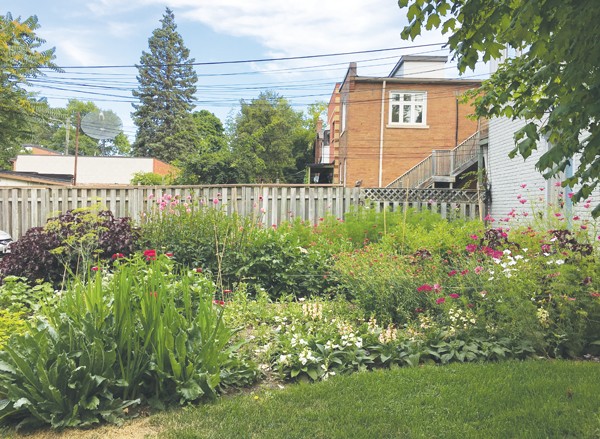
Growing in the city she finds less insect pressure, and with multiple plots she can spread the risk by planting the same thing in multiple yards, she said. “There may be Japanese beetles in one yard, but not three away.”
What’s it like dealing with homeowners? Sarah says she hasn’t had any truly awful people. “One accused me of introducing weeds, but she has fantastic soil so I forgave her a lot.” She heads off potential issues by making sure she communicates regularly, so the homeowners know what’s going on and she knows how they are feeling. “I want them to know I value their input,” she said. On the ground she makes sure they feel their space is respected by sweeping up walkways and keeping it neat.
There are two types of people, she says, those who are excited about getting a free garden and those who are excited about supporting an organic flower business and being connected to the community.
At times, she has to breakup with a homeowner. “At one it was great for six years, but then the trees had grown so much it was too shady.” Other times, people move and sell their houses. In one case where the soil was great and Sarah had invested several years there, the realtor put her in touch with the new owners who wanted to continue as part of the floral business. “I’m still with them,” she says. “Nine years with that yard, it’s my longest tenure in a yard.”
Sarah does most of the work and brings in part-time people when needed to help with weeding, watering and delivering. When harvesting, she puts her station wagon’s middle seat down to comfortably fit twelve flower buckets. Without much cool storage, Sarah quickly turns over the flowers from harvest to sale. Spring peony buds and a few flowers that she wants to last longer are held in her cool basement and her kitchen fridge.
My Luscious Backyard sells wholesale to florists every Wednesday. Sometimes florists pick up from her downtown home. She also is part of The Local Flower Collective in Toronto, made up of growers and florists. One of the florists has a walk-in cooler where growers can drop off flowers. In addition to wholesale, she delivers to individual subscription clients and added a flower bucket subscription, where customers pick up from her front porch and leave the old buckets behind.
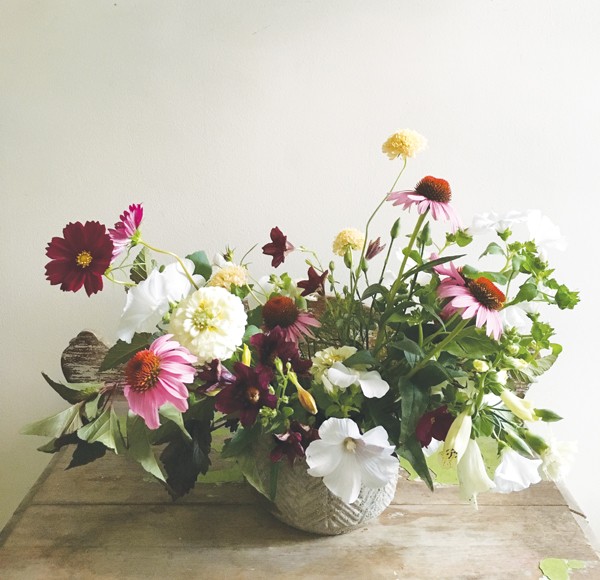
She does full wedding floral design work and also picks buckets of flowers for DIY brides based on color palates they give her. Brides don’t get to come into the gardens to pick flowers. “If they come into the garden there’s too much choice and they change their minds, and that’s after six months of exchanging emails,” she says. Besides, she needs to respect the private property of her homeowners. People may come to her gardens for special tours, such as when she leads a workshop on growing a cutting garden.
Within the confined space of the urban yards that constitute her micro farm, she grows a wide variety of flowers in different shapes and sizes and textures. Among them: “Cafe Au Lait” and “Burgundy” dahlias; loads of cosmos and Digitalis, which don’t overwinter well in her climate; rose mallow (Lavatera trimestris), an impressive, shrubby plant with rich, green foliage and four-inch hibiscus-like blooms from pale pink to deep rose that appear from midsummer until the first frost. She also loves Agrostemma and Clematis, Japanese Anemones, and, “Cherry Caramel” and “Creme Brûlée” annual phlox.
The Flower Farmer: An Organic Grower’s Guide to Raising and Selling Cut Flowers by Lynn Byczynski is available from GFM for $35. The Urban Farmer by Curtis Stone is available for $29.95. As always, subscribers get 20% off all books.
Jane Tanner grew cut flowers and specialty crops at Windcrest Farm and Commonwealth Farms in North Carolina, and helped manage the biodynamic gardens at Spikenard Farm in Virginia.

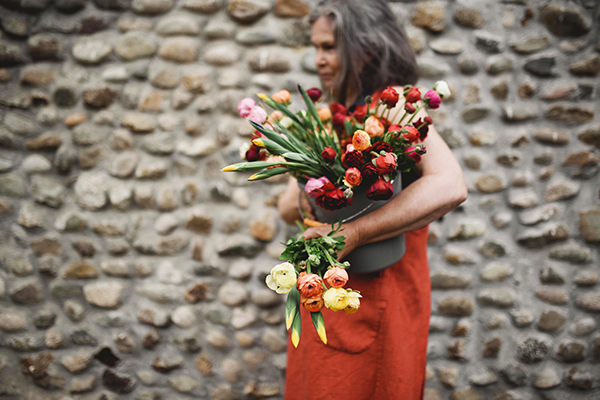 Lorna Jackson started flower farming intensely relatively later in life at Ninebark Farm on a century-old hayfield in Metchosin at the southern tip of Vancouver Island in British Columbia, Canada. Now 64, she plans to continue into her 70s. To keep going, she makes adaptations to ease the toll on her body.
Lorna Jackson started flower farming intensely relatively later in life at Ninebark Farm on a century-old hayfield in Metchosin at the southern tip of Vancouver Island in British Columbia, Canada. Now 64, she plans to continue into her 70s. To keep going, she makes adaptations to ease the toll on her body.
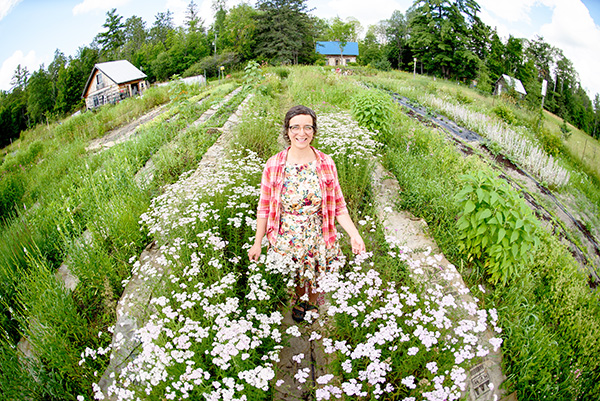 Most flower farms evolve and change in their early years — adopting crops, markets and niches and shedding crops, markets and niches based on viability, preferences and motivation. Danielle Schami of Les fleurs Franktown House Flowers in Wakefield, Quebec, has navigated various paths during her seven years farming. Today, her focus is strengthening her region’s local flower movement and building partnerships.
Most flower farms evolve and change in their early years — adopting crops, markets and niches and shedding crops, markets and niches based on viability, preferences and motivation. Danielle Schami of Les fleurs Franktown House Flowers in Wakefield, Quebec, has navigated various paths during her seven years farming. Today, her focus is strengthening her region’s local flower movement and building partnerships.
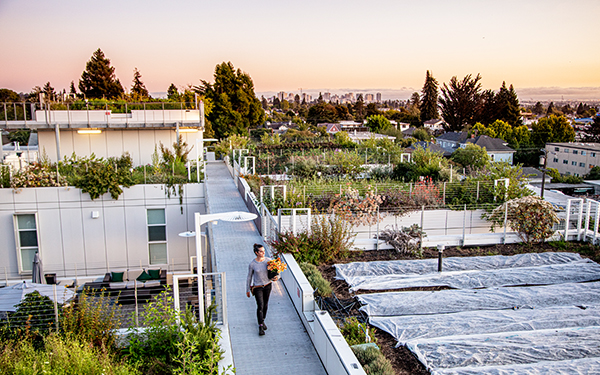 I own and operate Bluma Flower Farm, currently located on a rooftop in downtown Berkeley, California. Going into this year my plan was to try to replicate what I did the year before, one of Bluma’s best years yet. This would have been the first year I didn’t make any big changes. But then the pandemic hit and, of course, like many other businesses, I had to pivot and find ways to survive.
I own and operate Bluma Flower Farm, currently located on a rooftop in downtown Berkeley, California. Going into this year my plan was to try to replicate what I did the year before, one of Bluma’s best years yet. This would have been the first year I didn’t make any big changes. But then the pandemic hit and, of course, like many other businesses, I had to pivot and find ways to survive. 
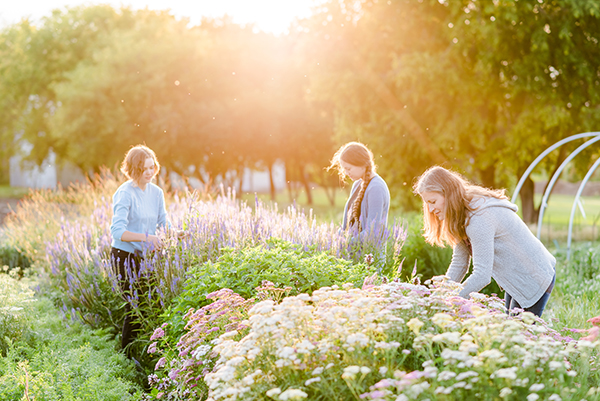 Farming in any location is challenging. Imagine the challenge of growing crops at latitude 54.5° where winter temperatures hit minus 40° Celsius (minus 40° Fahrenheit) and a mere 100-day growing season can be abbreviated with a large dump of snow at the beginning of September. Meanwhile during the spring, Chinook winds blow and the high latitude’s strong sun alters flowers’ growing cycles.
Farming in any location is challenging. Imagine the challenge of growing crops at latitude 54.5° where winter temperatures hit minus 40° Celsius (minus 40° Fahrenheit) and a mere 100-day growing season can be abbreviated with a large dump of snow at the beginning of September. Meanwhile during the spring, Chinook winds blow and the high latitude’s strong sun alters flowers’ growing cycles. 
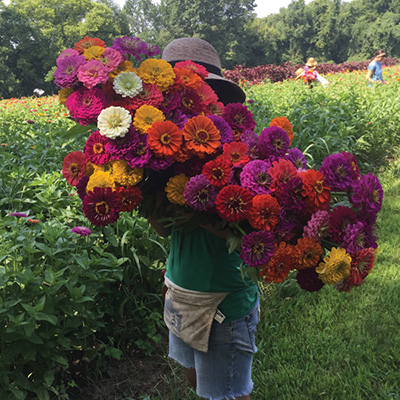
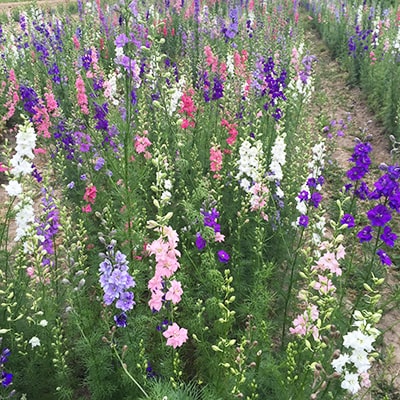
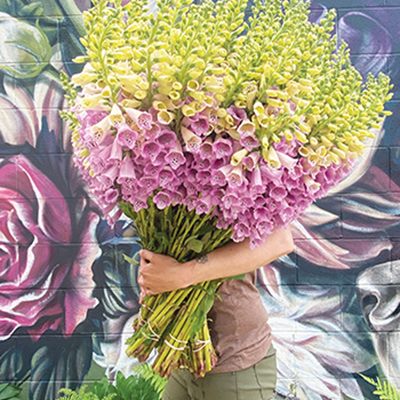
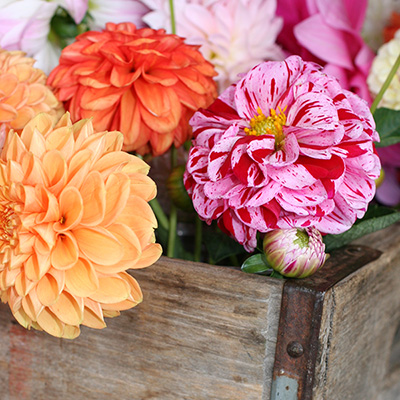


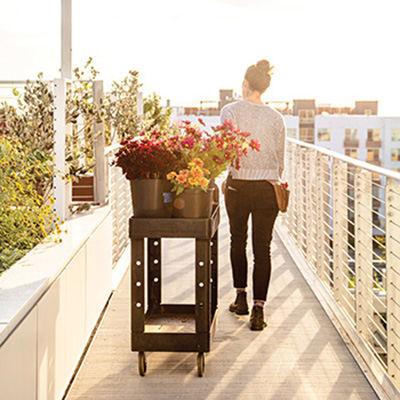
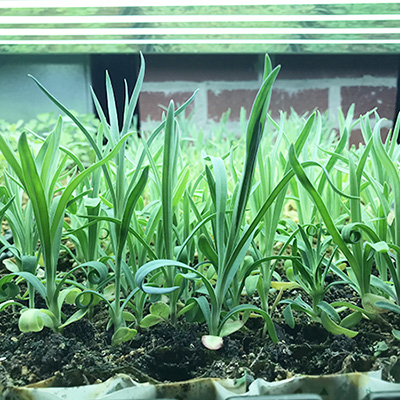
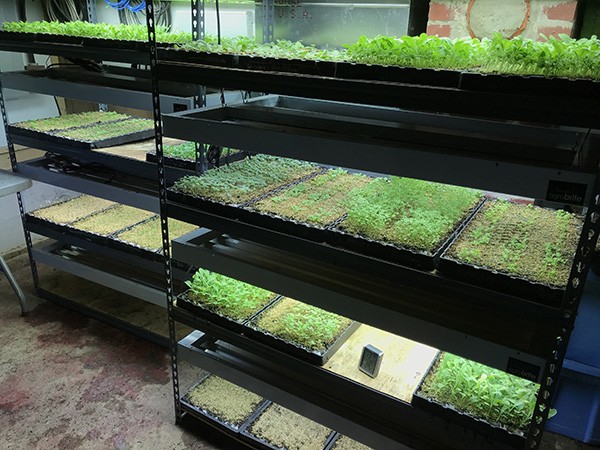 Have you ever lost precious seedlings in your greenhouse to frost? How about tossing a flat or two out due to heat stress or a missed watering? Or better still, stared at a tray of seeds that won’t germinate, with smoke coming out of your ears, because you’re sure someone (not you!) mis-watered them at a critical moment? Have you ever shrugged to yourself reading the growing instructions on a seed packet that says “Germinates best at 70 Fahrenheit” while standing in your 85-90 degree greenhouse? You’ve started to look into a germination chamber to solve some of these issues, but they look pricey and have limitations like not being able to handle as many flats as you’d like to start at once.
Have you ever lost precious seedlings in your greenhouse to frost? How about tossing a flat or two out due to heat stress or a missed watering? Or better still, stared at a tray of seeds that won’t germinate, with smoke coming out of your ears, because you’re sure someone (not you!) mis-watered them at a critical moment? Have you ever shrugged to yourself reading the growing instructions on a seed packet that says “Germinates best at 70 Fahrenheit” while standing in your 85-90 degree greenhouse? You’ve started to look into a germination chamber to solve some of these issues, but they look pricey and have limitations like not being able to handle as many flats as you’d like to start at once.

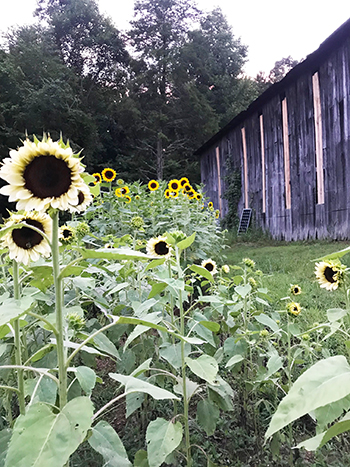 After spending years working in a corporate environment and managing key performance indicators, I was excited about the prospect of farming without the overhead of data analysis. Gone would be the management by objectives, the need to determine return on investment and other such details on which the corporate world revolves.
After spending years working in a corporate environment and managing key performance indicators, I was excited about the prospect of farming without the overhead of data analysis. Gone would be the management by objectives, the need to determine return on investment and other such details on which the corporate world revolves.